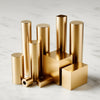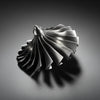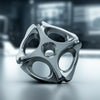5-Axis Machining: Essential Design Optimization Secrets
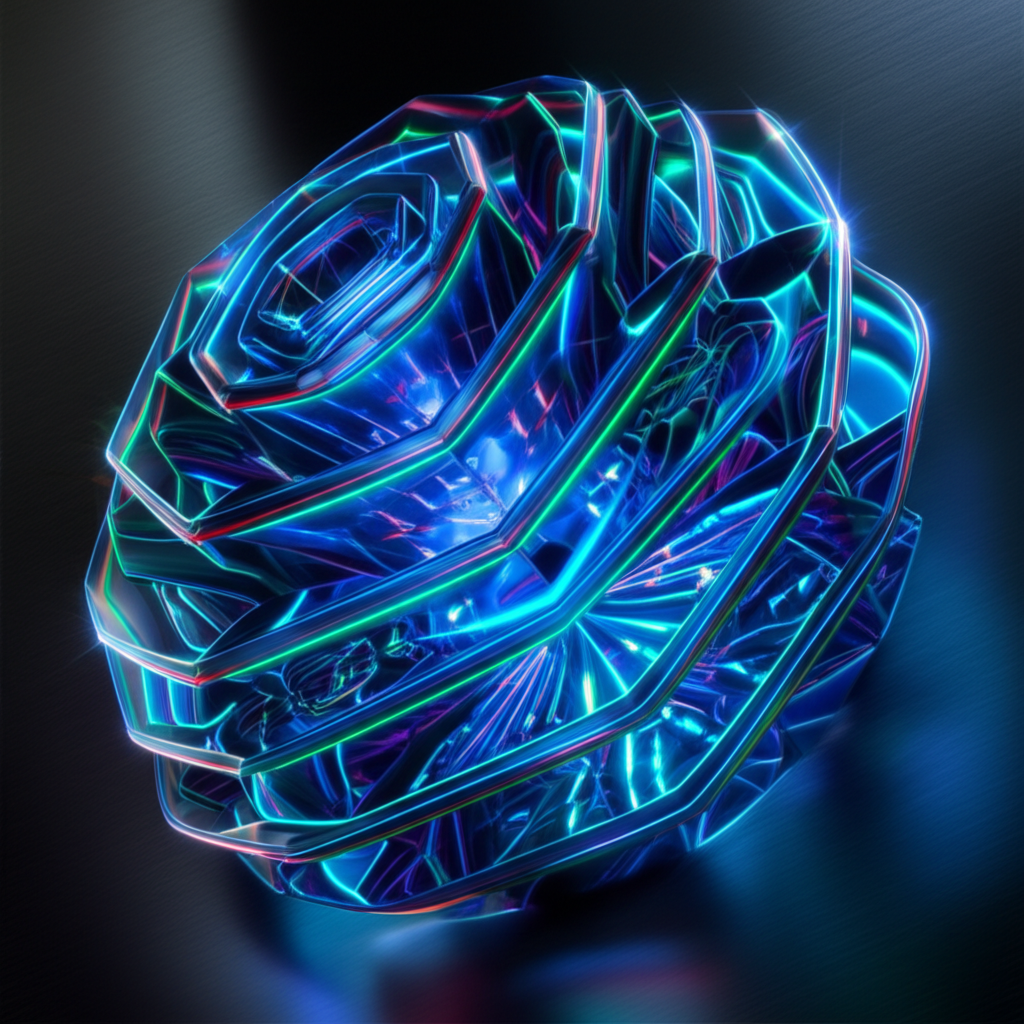
TL;DR
Optimizing designs for 5-axis machining involves specific Design for Manufacturability (DFM) strategies to enhance efficiency, reduce costs, and fully leverage the machine's ability to create complex geometries. Key practices include managing wall thickness, simplifying internal corners with radii, specifying appropriate tolerances, and considering tool access to minimize setups and production time.
Fundamentals of 5-Axis Machining: Why Design Matters
Five-axis CNC (Computer Numerical Control) machining represents a significant leap forward from traditional 3-axis systems. While a 3-axis machine operates on the X, Y, and Z linear axes, a 5-axis machine adds two rotational axes (commonly A and B or C). This allows the cutting tool or the workpiece to be moved and rotated simultaneously, enabling the creation of highly complex shapes and geometries in a single setup. This capability is crucial for industries like aerospace, medical, and automotive, where intricate components are standard. According to an article from Autodesk, this technology allows for the creation of parts with greater complexity at higher speeds and lower costs.
The primary advantage of 5-axis machining is its ability to approach a workpiece from multiple angles without needing to be manually re-fixtured. This offers several key benefits:
- Reduced Setup Time: By machining multiple sides of a part in one continuous operation, the time-consuming process of stopping the machine and repositioning the workpiece is minimized or eliminated.
- Improved Accuracy: Each time a part is re-fixtured, there is a potential for positional error. A single setup ensures that all features are machined in relation to each other with higher precision.
- Superior Surface Finish: The tool can remain tangential to the cutting surface, resulting in a smoother finish and reducing the need for secondary polishing operations.
- Complex Geometries: Features like undercuts and deep, narrow cavities that are impossible or difficult with 3-axis machines become feasible.
However, simply having a 5-axis machine is not enough to guarantee these benefits. The design of the part itself is the most critical factor. An unoptimized design can negate the machine's advantages, leading to long cycle times, increased tool wear, and higher costs. Design for Manufacturability (DFM) is the practice of designing parts in a way that makes them easier and more cost-effective to produce. For 5-axis machining, this means creating geometries that leverage the machine's strengths while avoiding common pitfalls that complicate the manufacturing process. A well-considered design is the foundation of an efficient and successful machining workflow.
Core Principles for Design for Manufacturability (DFM)
Applying DFM principles is essential for unlocking the full potential of 5-axis machining. By making strategic design choices, engineers can significantly reduce production time, lower costs, and improve the final quality of the part. These guidelines focus on creating geometries that are efficient for the machine and its tooling to navigate.
- Manage Wall Thickness and Height: Thin walls are susceptible to vibration and deflection during machining, which can lead to inaccuracies and poor surface finish. As a general rule, aim for a minimum wall thickness of 0.8 mm for metals and 1.5 mm for plastics. For tall walls, the height should ideally not exceed four times the thickness to maintain stability. Exceeding this ratio increases the risk of chatter and may require slower cutting speeds or specialized tooling, increasing cost.
- Optimize Internal Corners with Radii: CNC cutting tools are cylindrical, meaning they inherently create a radius in any internal vertical corner. Designing parts with sharp, 90-degree internal corners is impossible without secondary processes like EDM. To facilitate efficient machining, add a generous radius to all internal corners. A radius that is at least one-third of the cavity's depth is a good starting point, as it allows for a larger, more rigid tool to be used. As detailed in a guide from Protolabs Network, slightly increasing this radius allows the tool to move more smoothly, improving the surface finish.
- Specify Appropriate Tolerances: While CNC machining can achieve very tight tolerances, not every feature requires them. Overly tight tolerances are a major cost driver, as they demand more precise machine calibration, slower cutting speeds, and additional inspection steps. Specify tight tolerances only for critical features and surfaces where they are functionally necessary. For non-critical dimensions, using standard tolerances (e.g., ±0.1 mm) can significantly reduce manufacturing costs and time.
- Simplify Holes and Threads: Whenever possible, use standard drill bit sizes for holes. Custom-sized holes must be milled with an endmill, which can take longer. The depth of a hole should ideally be limited to four times its diameter, although depths up to ten times the diameter are achievable. For threaded holes, it is more cost-effective to design for sizes M6 or larger, as these can be cut with more robust CNC threading tools. For threads smaller than M6, ensure there is an unthreaded length at the bottom of the hole to prevent tap breakage.
- Consider Tool Access and Part Orientation: Design parts so that as many features as possible can be accessed from a single direction. While 5-axis machines excel at repositioning, minimizing complex rotations still improves efficiency. Deep, narrow cavities can be challenging as they require long, thin tools that are prone to deflection. A good rule of thumb is to keep cavity depth to no more than four times the width. Designing with tool access in mind from the outset prevents costly redesigns or complex machining setups later.
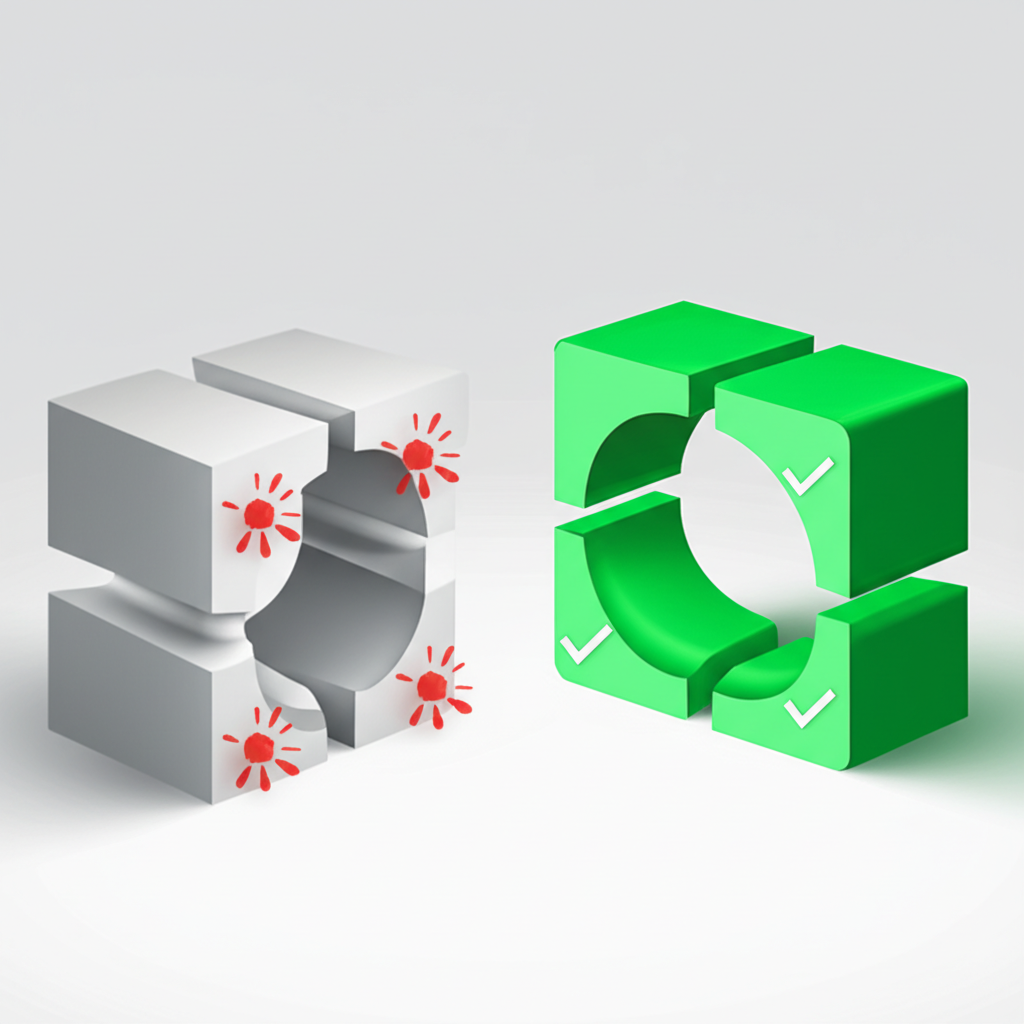
Advanced Strategies: Optimizing Tool Orientation and Workflow
Beyond fundamental part geometry, advanced optimization focuses on the dynamic interaction between the cutting tool and the workpiece. The toolpath—the programmed route the cutting tool follows—is a critical factor in both efficiency and quality. Sophisticated CAM (Computer-Aided Manufacturing) software is essential for generating toolpaths that maintain constant tool engagement with the material. This strategy avoids sharp changes in direction and jerky movements, which can cause tool chatter, leave visible marks on the surface, and increase tool wear. A smooth, flowing toolpath allows the machine to run at higher speeds, reducing cycle time while producing a superior surface finish.
Tool orientation is another key area for optimization. One of the main advantages of 5-axis machining is the ability to continuously adjust the angle of the tool relative to the part. This allows for the use of shorter, more rigid cutting tools, as they can be tilted to reach around features instead of requiring long, slender tools that are prone to vibration. Proper tool orientation, as explored in research highlighted by ScienceDirect, can significantly reduce contour errors. Effective programming ensures the tool is always at the optimal cutting angle, which improves material removal rates and extends the life of the tool.
A truly optimized workflow extends from the CAD file to the final part. The process begins with a clean, well-prepared CAD model. From there, advanced CAM software with robust simulation features is used to visualize the entire machining process. According to an article from Phasio, these simulations help identify potential collisions between the tool, workpiece, fixture, and machine components before any material is cut, preventing costly mistakes. This digital verification step is crucial for complex 5-axis operations. After simulation, a post-processor translates the toolpaths into machine-specific code, ensuring the machine behaves exactly as planned.
For businesses looking to implement these advanced strategies, partnering with a specialized service provider can be a highly effective approach. For instance, if you need high-precision custom parts, a service like XTJ offers rapid prototyping and volume production using advanced 4 and 5-axis CNC machining centers. Their expertise in handling over 30 materials with tight tolerances ensures that even the most demanding designs are brought to life efficiently and with certified quality, making them a valuable resource for projects in aerospace, medical, and other high-stakes industries.
Common Pitfalls and How to Avoid Them
Even with advanced machinery, certain design choices can create significant manufacturing hurdles, leading to increased costs, delays, and compromised quality. Understanding these common pitfalls and how to avoid them is a crucial aspect of optimizing designs for 5-axis machining.
Pitfall: Designing Inaccessible Internal Geometries
The Problem: A frequent mistake is designing complex internal features, such as deep pockets with small openings or internal undercuts, without considering how a cutting tool will reach them. Every feature on a part must be accessible to the cutting tool. If a tool cannot physically fit into a space or reach a surface at the correct angle, that feature cannot be machined.
The Solution: During the design phase, constantly visualize the cutting process. Use the simulation features in modern CAD/CAM software to perform toolpath analysis and collision detection. This will reveal any inaccessible areas early on. If a feature is difficult to reach, consider redesigning it. This might involve increasing the size of an opening, splitting the part into multiple components that can be assembled later, or changing the shape to allow for better tool access.
Pitfall: Overly Complex or Unnecessary Features
The Problem: While 5-axis machining is capable of producing incredibly complex parts, complexity should always serve a functional purpose. Adding intricate features, small engraved text, or non-functional aesthetic curves increases machining time and cost. For example, raised text is far more difficult to machine than recessed (engraved) text, as it requires removing all the surrounding material. Similarly, designing a part with many small, non-symmetrical features requires more complex programming and longer cycle times.
The Solution: Practice design minimalism. Every feature should have a clear justification. Simplify geometries where possible without compromising the part's function. Protolabs suggests using recessed text with sans-serif fonts and ensuring character spacing is adequate for the tool. Favor symmetrical designs when possible, as they simplify programming and setup. Always ask if a complex feature can be simplified or eliminated entirely.
Pitfall: Ignoring Material-Specific Constraints
The Problem: Different materials behave differently during machining. Harder materials like titanium or stainless steel require slower cutting speeds and generate more heat, while softer materials like aluminum can be machined much faster. Plastics are prone to warping from heat and may deflect under cutting pressure if features are too thin. Designing a part without considering the properties of the selected material can lead to failed parts or inefficient production.
The Solution: Select the material early in the design process and tailor the design to its properties. For hard metals, avoid very fine features and sharp internal corners that can cause tool stress. For plastics, ensure walls are thick enough to resist warping and deflection (generally 1.5 mm or more). Research the specific machinability characteristics of your chosen material and adjust design parameters like wall thickness, corner radii, and feature size accordingly.

From Design to Production: A Final Check
Mastering the design principles for 5-axis machining is a transformative step for any engineer or designer. It bridges the gap between a digital concept and a tangible, high-quality component. By moving beyond the limitations of older manufacturing methods and embracing the capabilities of 5-axis technology, you unlock the ability to create parts that are not only more complex but also more efficient to produce. The key is to internalize the core concepts of DFM—managing tolerances, optimizing corners, ensuring tool access, and respecting material properties.
The journey from an initial idea to a finished product is an iterative process. The most successful outcomes are born from a workflow that integrates design, simulation, and manufacturing knowledge from the very beginning. Thinking like a machinist while you design is not a constraint but an empowerment. It allows you to anticipate challenges, eliminate costly errors before they occur, and leverage the full, remarkable potential of 5-axis CNC machining to drive innovation forward.
Frequently Asked Questions
1. What is the main advantage of 5-axis over 3-axis machining?
The primary advantage of 5-axis machining is its ability to machine complex shapes in a single setup. By adding two rotational axes, it can approach a workpiece from multiple angles without needing to be manually re-fixtured. This leads to reduced setup times, higher accuracy because the part isn't moved, and better surface finishes, as the tool can maintain an optimal angle to the material.
2. How do tolerances affect the cost of a machined part?
Tolerances have a significant impact on cost. Tighter tolerances require more precise machine setup, slower cutting speeds to avoid deviation, specialized measurement tools for inspection, and potentially higher scrap rates. This all translates to increased machining time and labor. Specifying tight tolerances only where functionally necessary and using standard tolerances for non-critical features is a key strategy for cost reduction.
3. Why are sharp internal corners a problem in CNC machining?
CNC machining uses rotating cylindrical tools (end mills) to remove material. Because the tool is round, it cannot create a perfectly sharp internal corner; it will always leave a radius. Attempting to create a very small radius requires a very small, fragile tool that must run slowly, increasing time and the risk of tool breakage. Designing parts with a generous internal corner radius allows for the use of larger, more robust tools, leading to faster and more efficient machining.

